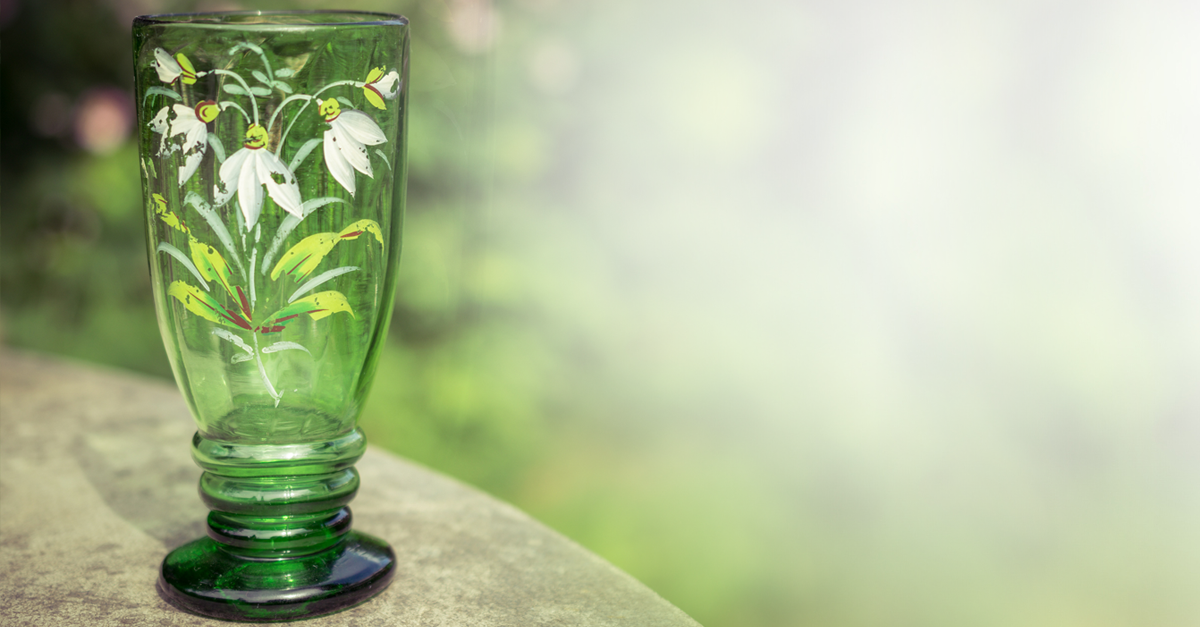It may seem like harmless fun to sip a smoothie, beer or cola from your favorite superhero glass. But unless you, too, can be felled only by kryptonite, you’ll be much healthier if you drink your beverage from a plain glass. Here’s why…
Background: Popular decorative glassware, such as drinking glasses that have characters, logos or colorful patterns painted onto them, have come under scrutiny again for their potential danger to health. This isn’t the first time. For example, in 2010, Coca-Cola voluntarily recalled 88,000 glasses marketed to kids after tests found the toxic metal cadmium in the decorative paint. Now a new study shows evidence that the problem may be more widespread.
Study: A team from the University of Plymouth in England ran 197 tests on 72 pieces of decorated glassware. Researchers tested both new and secondhand beer mugs, shot glasses, tumblers, jars and wine glasses decorated with enamel paint or glaze in a variety of colors, including gold leaf, that had been made in China and Europe.
Results: Regardless of paint color used, more than 70% of the drinkware tested positive for lead. About the same amount also tested positive for cadmium, with the highest concentrations found in red enamel finishes.
Worse: When the researchers used a reagent that replicates acidic drinks, such as fruit juices, sodas and wine, metals from the rim area where the lips are in direct contact with the glass were easily dissolved. Also, flakes of paint came off when researchers put the glassware through tests that duplicated regular use, such as cleaning or stacking—further increasing the likelihood of mobilizing and ingesting these dangerous metals. And even though lead and cadmium were found on only some of the rim areas, having them anywhere on the surface of drinking glasses can potentially lead to ingestion if people touch their faces and/or mouths after holding the painted glassware.
Exposure to lead above four parts per million (ppm) and cadmium above 0.4 ppm from glass products that come into contact with food is considered unsafe, according to the US Food and Drug Administration. Alarmingly, lead concentrations on the tested glassware were as high as 400,000 ppm…and cadmium concentrations as high as 70,000 ppm.
Both lead and cadmium are highly toxic. Cadmium can damage the kidneys and increase the risk of lung, kidney and possibly pancreatic cancer. Unsafe levels of lead can cause high blood pressure, joint and muscle pain, memory problems, anemia and kidney disease, and are particularly damaging to young children. If you’ve been regularly drinking out of a glass that has enameled decoration near the rim, mention it to your doctor. A simple blood test is one way to detect cadmium or lead poisoning. A blood level above five micrograms per deciliter for lead and/or above five nanograms per milliliter for cadmium is considered elevated. If your levels are very high, your doctor might recommend medication that will bind with the metal so you can excrete it in your urine. Note: All plants absorb cadmium from the soil, but tobacco is especially efficient at doing this—which makes smokers at increased risk for high levels of the metal in their blood.
Bottom line: The researchers did find that organic inks, more common in newer glassware, tested negative for lead and cadmium. But since there’s no way to tell by looking whether the decorations on a particular glass are made with organic ink, stick to plain, undecorated glass bottles, glasses and food-storage containers.


